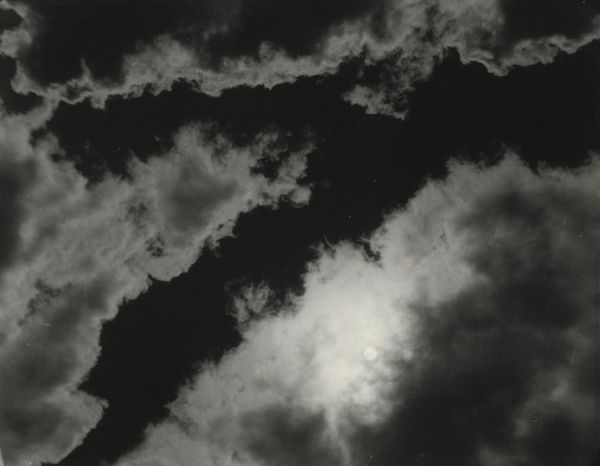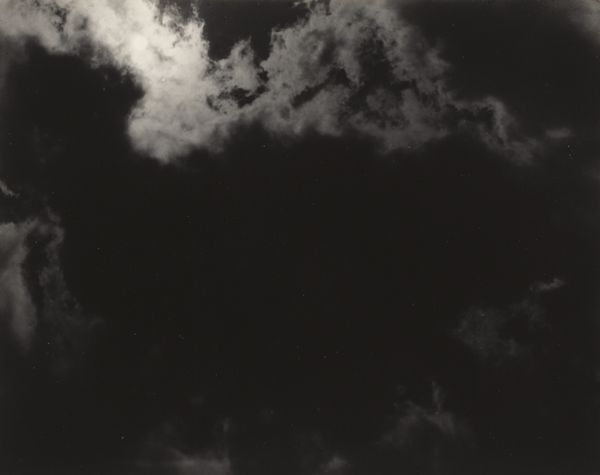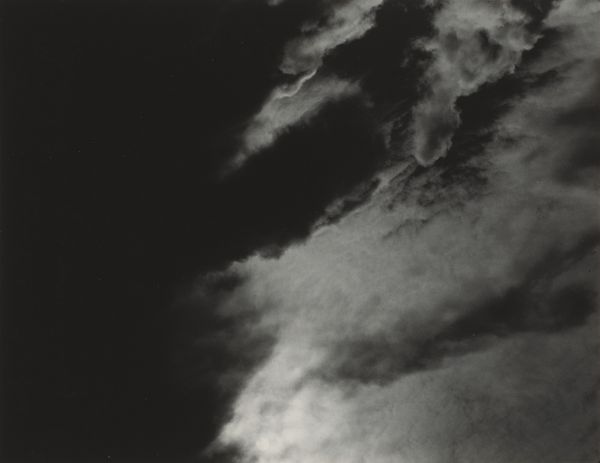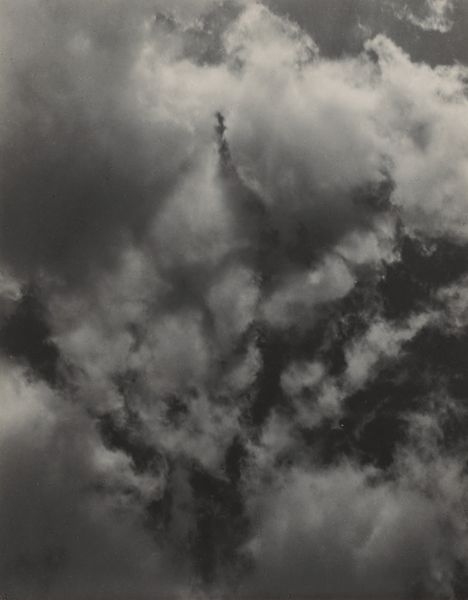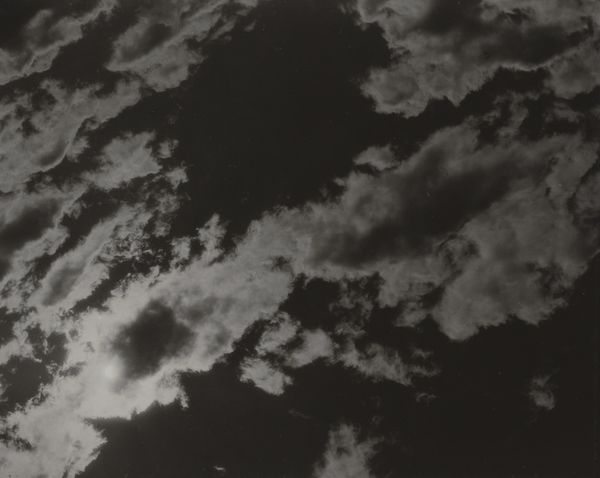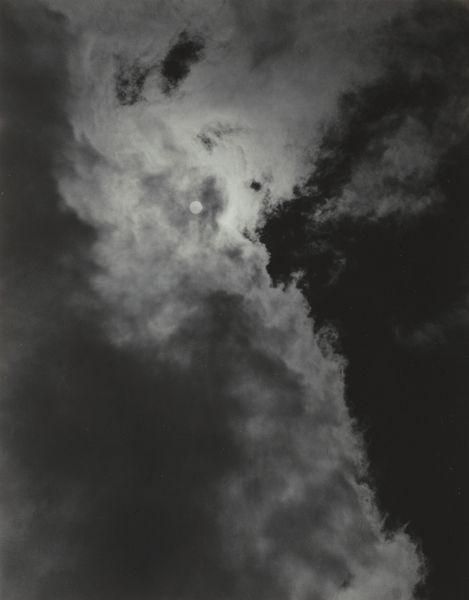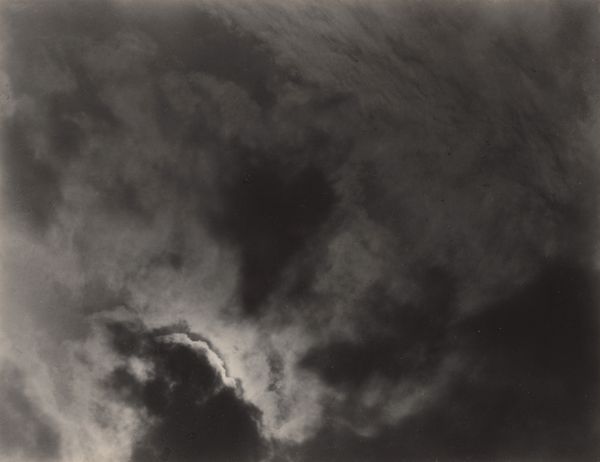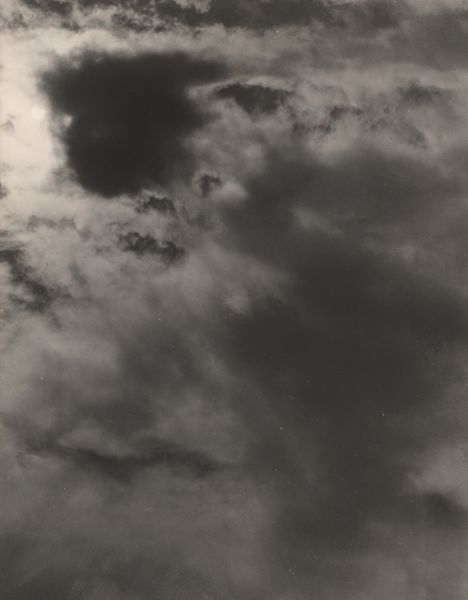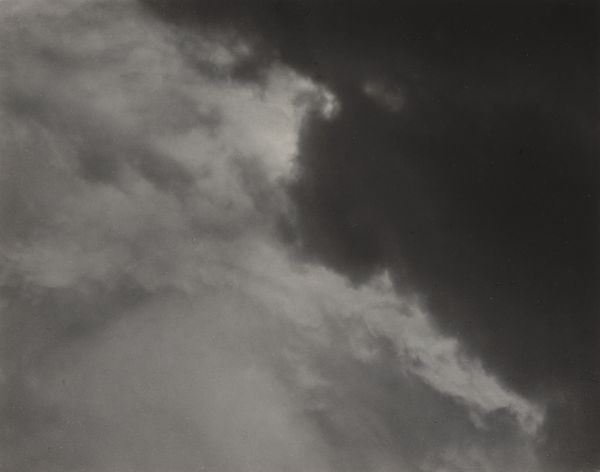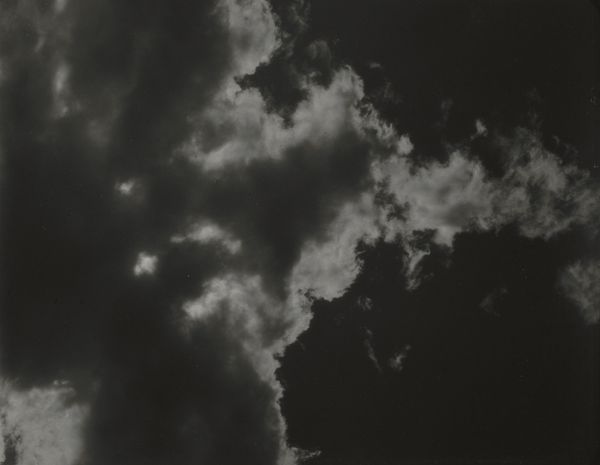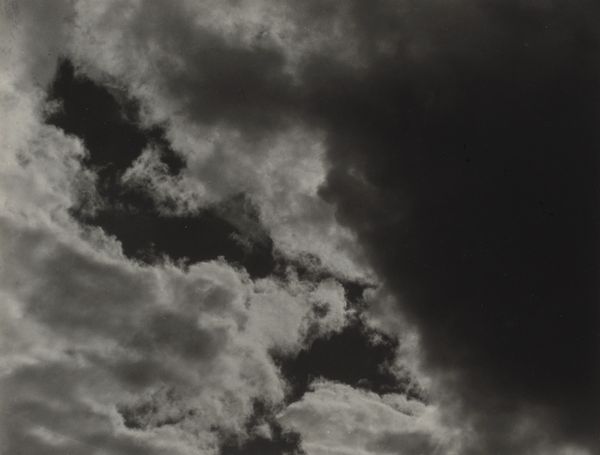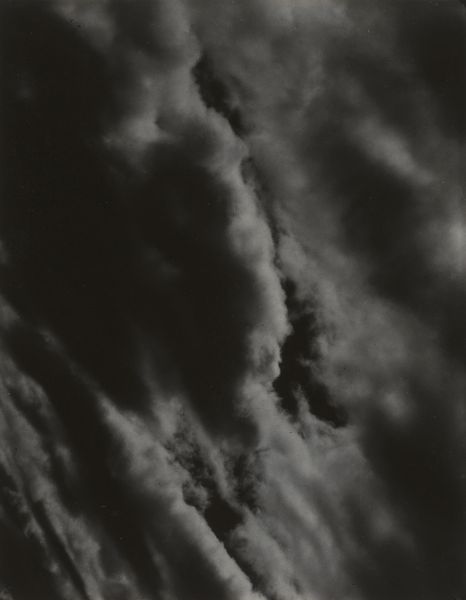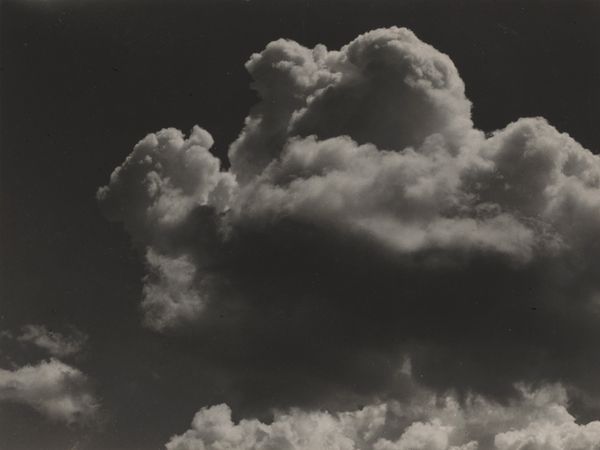
photography, gelatin-silver-print
#
landscape
#
photography
#
gelatin-silver-print
#
abstraction
#
monochrome
#
sublime
#
monochrome
Dimensions: sheet (trimmed to image): 9.2 x 11.9 cm (3 5/8 x 4 11/16 in.) mount: 34.2 x 27.5 cm (13 7/16 x 10 13/16 in.)
Copyright: National Gallery of Art: CC0 1.0
Editor: This is Alfred Stieglitz's "Equivalent," a gelatin-silver print from 1925. At first glance, it simply looks like clouds, but there's a real sense of drama and powerful emotion in this monochromatic palette. What socio-cultural impact did Stieglitz want to express through it? Curator: Stieglitz’s series challenged the art world's hierarchy, equating photography with painting as a medium for profound expression. How does this photograph position itself relative to the traditional art world of its time? Editor: In what ways did "Equivalent" break down traditional artistic barriers? It seems like a pretty radical assertion for photography back then. Curator: Precisely. Stieglitz sought to capture his inner state through these cloudscapes, offering viewers access to subjective emotional states. Consider the social climate in the 1920s; think about how this series challenged expectations surrounding art and photography within established cultural institutions. What statements about the public's perception of photography might he be trying to make? Editor: He was using photography to evoke powerful emotions just like painters do, right? Was the public accepting of it, and how was he able to shift this perspective on the photographic medium? Curator: Early responses were mixed. He exhibited them in his own galleries, championing photography. What kind of access do we think that gave to people to actually view photography as art, or, alternately, what barriers did this access put up? Editor: So, it was partly about controlling how the work was seen? By situating his work in a specific milieu, that impacted its perception. I hadn’t really thought about that side of things before. Curator: Indeed, the presentation of art, and the socio-political factors within which that art sits, is of crucial significance. It's something worth always keeping in mind. Editor: I’ll remember to consider that! Thanks.
Comments
No comments
Be the first to comment and join the conversation on the ultimate creative platform.
